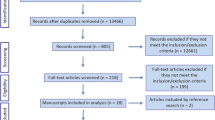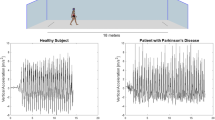Abstract
Independent living requires the navigation of a surrounding environment which is often cluttered with obstacles. When walking around an obstacle in the travel path, safe clearance requires some degree of body-segment reorientation. While body-segmental coordination strategies have been well studied for steering tasks that require moving the body in a new walking direction, it has never been established just what coordination strategies are used in different walking tasks. To address this issue, the current study was designed to investigate the timing of body segment coordination strategies and whole-body anticipatory locomotor adjustments employed when circumventing an obstacle placed in the travel path. Six healthy adults were asked to walk at their natural pace during unobstructed walking, as well as during avoidance to the right or left of a cylindrical obstacle (OBS) located in the travel path. Data analyzed were center of mass (COM) clearance from the OBS, forward velocity, step length and width, yaw angles of the head and trunk, roll angle of the trunk, and medial-lateral COM displacement. Onset of change in these variables from unobstructed walking was calculated as the time from OBS crossing. Avoidance involved two equally used strategies: lead limb close to or away from the OBS during the crossing step. Medial-lateral COM deviations were controlled by changes in step width without changes in trunk roll. There were no differences in the onset times of body segment reorientation for path deviation. These results are in contrast to previous studies on change in travel direction where the head segment initiates the body reorientation. Contrary to a steering task, circumventing an obstacle requires a different coordination for a transient change in COM trajectory with the underlying travel-direction maintained.


Similar content being viewed by others
References
Berthoz A, Viaud-Delmon (1999) Multisensory integration in spatial orientation. Curr Opin Neurobiol 9:708–712
Bloomberg JJ (1997) Locomotor head-trunk coordination strategies following space flight. J Vest Res 7(2/3):161–177
Grasso R, Glasauer S, Takei Y, Berthoz A (1996) The predictive brain: anticipatory control of head direction of the steering of locomotion. Neuroreport 7:1170–1174
Grasso R, Pévost R, Ivankeo YP, Berthoz A (1998) Eye-head coordination for the steering of locomotion in humans: an anticipatory synergy. Neurosci Lett 253:115–118
Hollands MA, Sorenson KL, Patla AE (2001) The effects of head immobilization on the coordination and control of head and body reorientation and translation during steering. Exp Brain Res 140:223–233
Hollands MA, Patla AE, Vickers JN (2002) "Look where you are going!": gaze behavior associated with maintaining and changing the direction of locomotion. Exp Brain Res 143:221–230
Horak FB, Nashner LM (1986) Central programming of postural movements: adaptations to altered support-surface configurations. J Neurophysiol 55:1369–1381
McFadyen BJ, Winter DA (1991) Anticipatory locomotor adjustments during obstructed human walking. Neurosci Res Commun 9:37–44
Patla AE, Prentice SD (1995) The role of active forces and intersegmental dynamics in the control of limb trajectory over obstacles during locomotion in humans. Exp Brain Res 106:499–504
Patla AE, Prentice SD, Robinson C, Neufeld J (1991) Visual control of locomotion: strategies for changing direction and going over obstacles. J Exp Psychol Hum Percept Perform 17(3):604–634
Patla AE, Adkin A, Ballard T (1999) Online steering: coordination and control of body center of mass, head and body reorientation. Exp Brain Res 129:629–634
Pozzo T, Berthoz A, Lefort L (1990) Head stabilization during various locomotor tasks in humans. I. Normal Subjects. Exp Brain Res 82:97–106
Vallis LA, Patla AE (2001) Control of Posture and Gait. In: Duysens J, Smits-Engelsman BCM, Kingma H (eds) Symposium of the International Society for Postural and Gait Research, pp 494–497
Winter DA (1995) A.B.C. (Anatomy, Biomechanics and Control) of balance during standing and walking. Waterloo Biomechanics, Waterloo, Canada
Acknowledgements
Financial support from NSERC (B.J.M.) and a postdoctoral fellowship to L.A.V. (CIRRIS). We acknowledge and would like to thank the following people for their technical assistance: Mr. Guy St-Vincent, Mr. Martin Gérin-Lajoie, Mr. Francois Comeau, and Mr. Claude Simard.
Author information
Authors and Affiliations
Corresponding author
Rights and permissions
About this article
Cite this article
Vallis, L.A., McFadyen, B.J. Locomotor adjustments for circumvention of an obstacle in the travel path. Exp Brain Res 152, 409–414 (2003). https://doi.org/10.1007/s00221-003-1558-6
Received:
Accepted:
Published:
Issue Date:
DOI: https://doi.org/10.1007/s00221-003-1558-6




